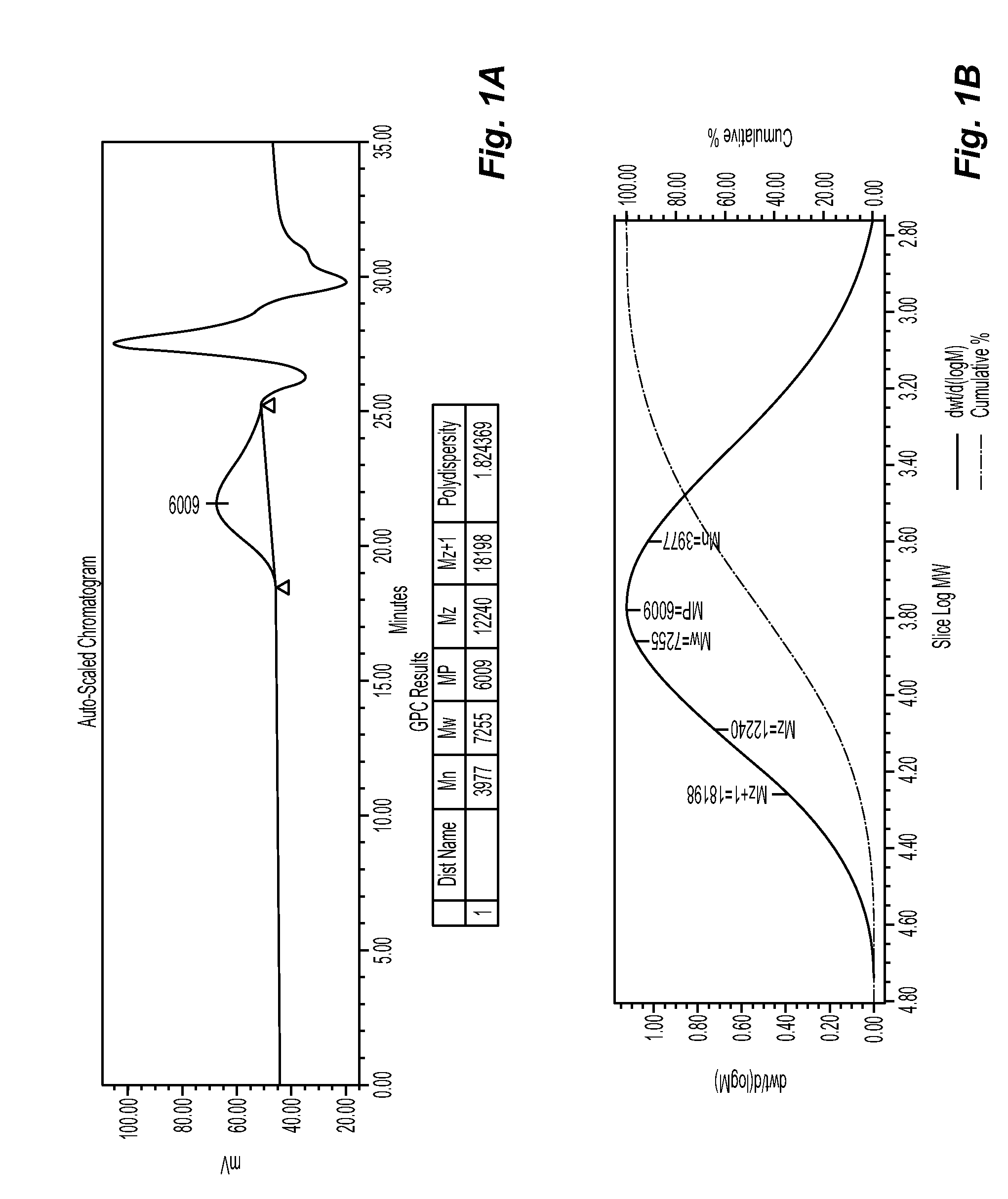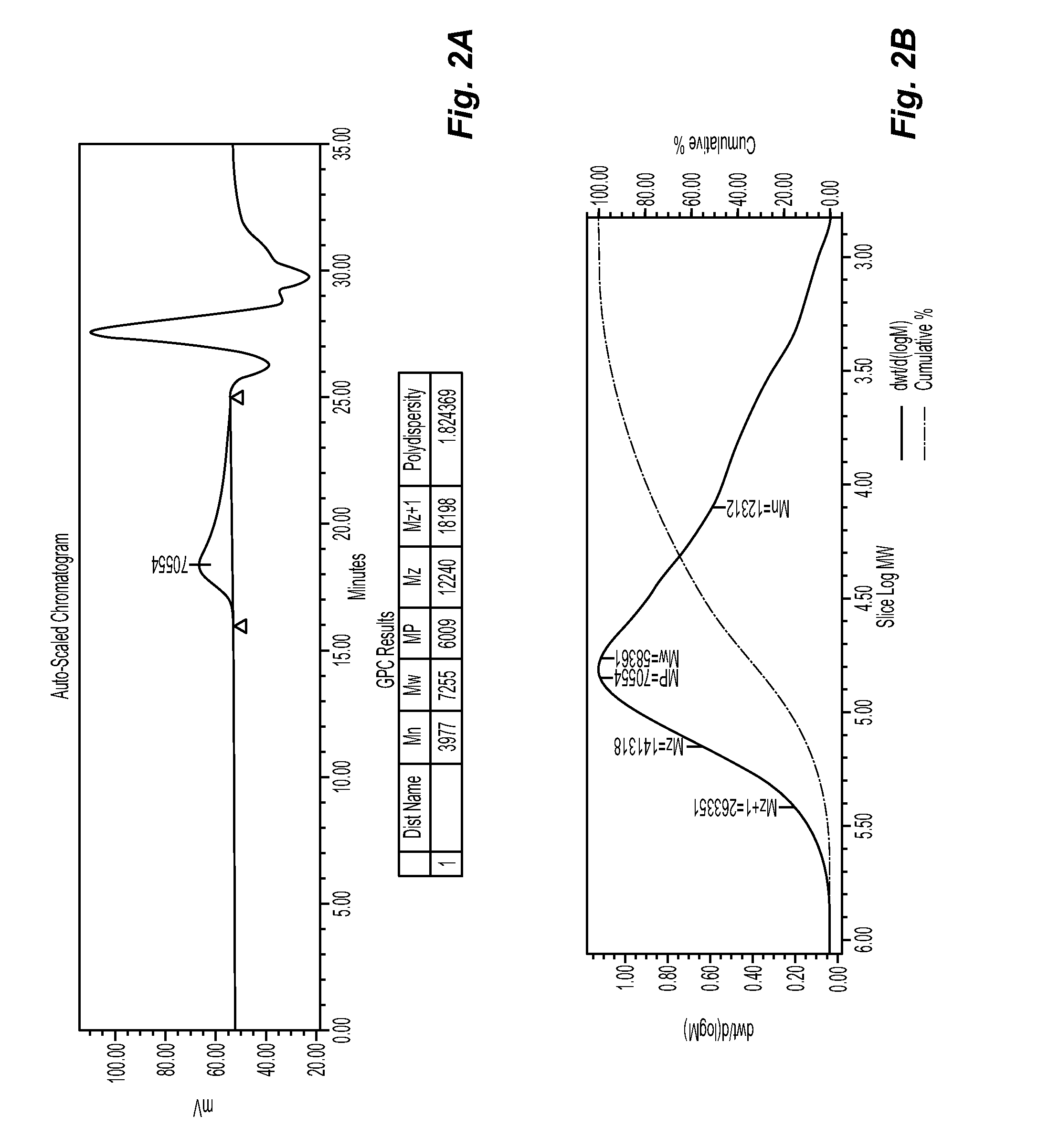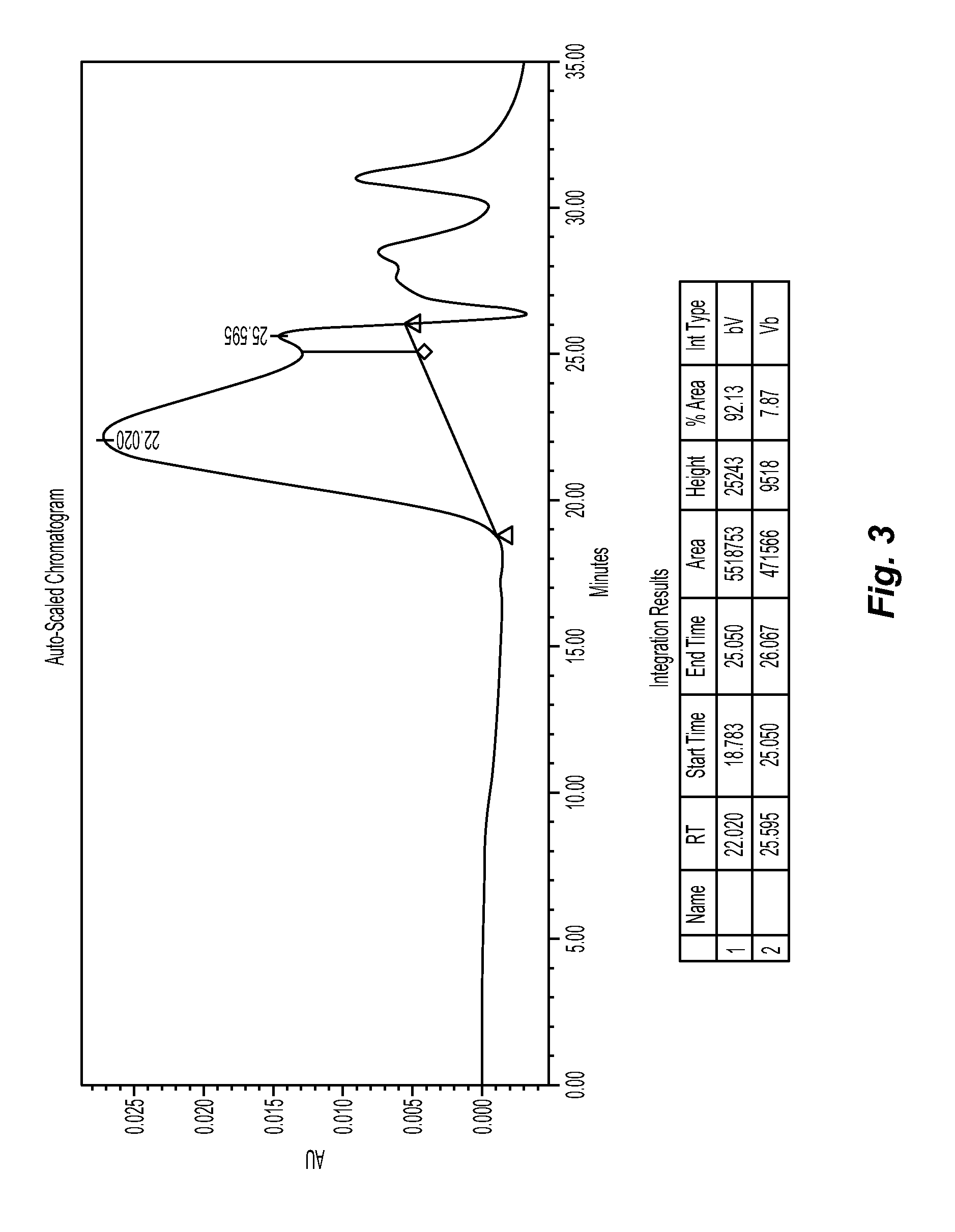Grafted Pigment Dispersing Polymeric Additive and Paint Employing the Same with Improved Hiding
a technology of pigment dispersing polymer and additive, which is applied in the direction of coatings, organic dyes, etc., can solve the problems of reducing the hiding power, settling and losing gloss, and affecting the appearance of pigment, so as to achieve improved hiding power, low molecular weight, and high acid content
- Summary
- Abstract
- Description
- Claims
- Application Information
AI Technical Summary
Benefits of technology
Problems solved by technology
Method used
Image
Examples
example 1
[0047]Preparation of grafted pigment dispersing polymeric additive with 25% polymeric pigment dispersant with styrene monomers:
ReactantsAmountConditionDeionized water 665.5 gHeated to 75-80° C. under Aqueous ammonia 35.1 gnitrogen and stirringRhodapon UB (An anionic 4.5 gsurfactant, usually a mixtureof sodium alkyl sulfates,mainly the lauryl) 12.0 gPolypropylene glycol PPG-725 (surfactant, wettingagent, dispersant)acrylic polymer, pigment174.75 gStirred until dissolved at dispersant (8600 MW / 21578-80° C.acid number)Styrene (monomer) 50 gMixed for 15 min at 78-80° C.Sodium persulfate (radical 2 gAdded at 78° C. and held at initiator) in 78-80° C. for 15 minutesDI water 20 gStyrene (monomer) 454 gFed in over a 2 hr period at 78-80° C.Sodium persulfate (radical 4.2 gFed in over a 2.25 hr periodinitiator) in(concurrently with Styrene feed) Water 25 gat 78-80° C.30 min after persulfate feed is finished, reactor is cooled to 60-65° C.Reducing agent, e.g., a 1.8 gAt 60-65° C., ...
example 2
[0048]Preparation of grafted pigment dispersing polymeric additive with 25% polymeric pigment dispersant with MMA / BA / methacrylic acid (MAA) monomers:
ReactantsAmountConditionDeionized water 665.5 gHeated to 75-80° C. under Aqueous ammonia 35.1 gnitrogen and stirringRhodapon UB (An anionic 4.5 gsurfactant, usually a mixtureof sodium alkyl sulfates,mainly the lauryl) 12.0 gPolypropylene glycol PPG-725 (surfactant, wettingagent, dispersant)acrylic polymer, pigment174.75 gStirred until dissolved at dispersant (8600 MW / 21578-80° C.acid number)Methyl methacrylate / butyl 50 gMixed for 15 min at acrylate / methacrylic acid (52.6 / 46.8 / 0.6)78-80° C.(monomer mixture)Sodium persulfate (radical 2 gAdded at 78° C. and held at initiator) in78-80° C. for 15 minutesDI water 20 gMethyl methacrylate / butyl 454 gFed in over a 2 hr period acrylate / methacrylic acidat 78-80° C.(monomer mixture)Sodium persulfate (radical 4.2 gFed in over a 2.25 hr periodinitiator) in(concurrently with the Water 25...
example 3
[0049]Preparation of grafted pigment dispersing polymeric additive with 25% polymeric pigment dispersant with MMA monomers:
ReactantsAmountConditionDeionized water1277.8 gHeated to 75-80° C. under Aqueous ammonia 67.4 gnitrogen and stirringRhodapon UB (An anionic 8.7 gsurfactant, usually a mixtureof sodium alkyl sulfates,mainly the lauryl) 23.1 gPolypropylene glycol PPG-725 (surfactant, wettingagent, dispersant)acrylic polymer, pigment 335.5 gStirred until dissolved at dispersant (8600 MW / 21578-80° C.acid number)Methyl methacrylate 96 gMixed for 15 min at (monomer)78-80° C.Sodium persulfate (radical 3.8 gAdded at 78° C. and held at initiator) in78-80° C. for 15 minutes.DI water 38.4 gMethyl methacrylate 871.7 gFed in over a 2 hr period at (monomer)78-80° C.Sodium persulfate (radical 8.07 gFed in over a 2.25 hr period initiator) in(concurrently with the monomer Water 48 gmixture) at 78-80° C. 30 min after persulfate feed is finished, reactor is cooled to 60-65° C.Reducing agen...
PUM
| Property | Measurement | Unit |
|---|---|---|
| Temperature | aaaaa | aaaaa |
| Temperature | aaaaa | aaaaa |
| Temperature | aaaaa | aaaaa |
Abstract
Description
Claims
Application Information
 Login to View More
Login to View More - R&D
- Intellectual Property
- Life Sciences
- Materials
- Tech Scout
- Unparalleled Data Quality
- Higher Quality Content
- 60% Fewer Hallucinations
Browse by: Latest US Patents, China's latest patents, Technical Efficacy Thesaurus, Application Domain, Technology Topic, Popular Technical Reports.
© 2025 PatSnap. All rights reserved.Legal|Privacy policy|Modern Slavery Act Transparency Statement|Sitemap|About US| Contact US: help@patsnap.com



